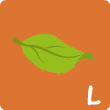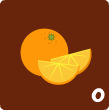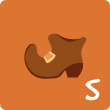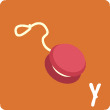Sweetopia's Sugarcrafting Glossary
*
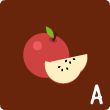
Acetate Paper – translucent, plastic, flexible paper which is often used for overhead projectors, and for sugarcrafting is used to do floodwork. Another name is transparency. Acetate rolls, sheets, liners or strips can be used to wrap desserts or line molds.
*
Bow Cutter – Tool/Cutter used to cut pieces for a sugarpaste bow.
Bleeding – When one icing runs, diffuses or spreads into another. Whenever an intense color such as red or black is beside a light one, such as white or yellow, bleeding seems to happen more.
*
CelFormers – Are basically forms used to dry sugarpaste flowers, leaves etc. in natural shapes. See also flower formers.
Confectioner's Sugar – Finely ground sugar, also called icing sugar or powdered sugar.
Color Flow – The Wilton company calls their icing used to decorate cookies Color Flow. It is a powder mix icing ready to use when water has been added. According to Wilton, it is also "a special decorating method used to make detailed icing decorations for cakes. It is "drawing", using a special icing, parchment bags, and tips". Also known as flood work.
Cornstarch – Also known as cornflour in the UK and Australia. It is the starch of the corn grain. In the "baking world", it is used when forming sugar work (i.e. gum paste flowers), to help prevent sticking. Icing sugar also contains a small amount of cornstarch to help prevent clumping.
Corn Syrup – Also known as Karo Syrup. It is a thick, sweet syrup created by processing cornstarch with acids or enzymes. Corn syrup comes in light or dark forms. Light corn syrup has been clarified to remove all color and cloudiness; dark corn syrup, which has caramel flavor and coloring added to it, has a deeper color and stronger flavor. Because it inhibits crystallization, corn syrup is particularly popular as an ingredient in frosting, candy, jams and jellies. It's also used as a pancake syrup, either maple-flavored or plain. © Copyright Barron's Educational Services, Inc. 1995 based on THE FOOD LOVER'S COMPANION, 2nd edition, by Sharon Tyler Herbst.
Coupler – A plastic piece (with two parts), which when inserted into a pastry bag, lets you change decorating tips without changing the bag.
Coupler Cover – Cover for piping tips to help prevent icing from drying out.
Cream of Tartar – According to epicurious, it is a "fine white powder derived from a crystalline acid deposited on the inside of wine barrels. Cream of tartar is added to candy and frosting mixtures for a creamier consistency, and to egg whites before beating to improve stability and volume. It's also used as the acid ingredient in some baking powders."
Cupcake Liners – Paper baking liners used to bake cupcakes in. Also called muffin liners, baking cups, cupcake cups and cupcake wrappers.
*
Dehumidifier – A household appliance which reduces the level of humidity in the air.
DH – Dear Husband 😉
Disco Dust – A non-toxic glitter.
Disposable Piping Bag (*Also called decorating bags. See Piping Bags for basic definition) – Can be washed and used multiple times. They aren't as strong as the canvas or polyurethane bags, but I like the disposable piping bags
because they're clear and you can see the icing color quickly.
Edible Frosting Sheets – Edible paper essentially made with sugar. It can be airbrushed or easily cut into shapes, however dries out and breaks quite easily. Frosting sheets are used in edible ink printers.
Edible Ink Cartridges – Cartridges filled with edible ink (food coloring) and paired with a printer used only for edible ink purposes.
Edible Rice or Wafer Paper – Edible paper made from rice or potato starch. It can be airbrushed or easily cut into shapes, seems sturdy but breaks quite easily. Edible paper can be used in edible ink printers.
Flood Icing – Royal icing thinned down with water used to create a sugar design. Basically, the flood icing is piped onto parchment paper, cookies, cakes etc. into an outlined icing shape. When the shape dries, you have an edible icing design.
Flood Work – Also known as run outs, transfers, Color Flow (by Wilton), or run sugar, is basically the piping of a runny royal icing onto parchment paper or acetate paper into an outlined shape.
When the shape dries, you have an icing design which you can use for a multitude of decorating purposes; on cakes, cookies, gingerbread houses, cupcakes etc. You can also pipe onto wires, toothpicks, skewers etc. so that your design can be 'free-standing'.
See also flood icing, transfers and color flow.
Flower Former – A convex or concave prop to help dry sugar flowers into a curved shape.
Fondant (Rolled fondant) – A paste is essentially made from icing sugar, water and gelatin. Ready-made fondant is widely available from baking supply stores and is used for covering cakes, for making flowers and modeling cake decorations.
Fondant Rolling Pin – A rolling especially used for fondant, gumpaste, marzipan or any kind of sugarpaste. The larger size is for cakes and the smaller size
for sugar flowers etc.
Gel color – A food coloring which blends better and is easier to dispense than paste colors. Both are more intense than liquid food coloring found in grocery stores.
Glucose – A version of corn syrup. One use is to give fondant and royal icing some shine. It can also be used to bond gum paste ingredients together for smooth, elastic texture. For more detail on the difference between corn syrup and glucose please see this discussion board.
Gluten – Protein in flour which develops elasticity when it is moistened and agitated. Kneading or mixing the dough is good for bread as it helps trap the carbon dioxide which enables it to rise without collapsing. Over-mixing cookie dough is not good as the glutens over-develop and a cookie with a bread-like texture results.
Glycerin – *(Not from a pharmacy. Food-safe glycerin from a cake supply store) Colorless and odourless. Can be used as a sweetener, to restore the consistency of icing colours, add shine to royal icing and is a natural softener for fondant.
Gum paste – An edible paste essentially made from icing sugar, water, glucose and gum tragacanth. Gum Paste can be used to cover cakes but it is most often used for decorative purposes, such as flowers and figurines. It dries harder and shows more detail than fondant does. Gum paste is also known as sugar paste, edible modelling paste or sometimes even 'candy clay'.
Gum tragacanth – From a plant that grows in the Middle East, gum tragacanth is used as an ingredient in gum paste.
Half and Half (Gumpaste & Fondant) – Is a mixture of half gum paste and half fondant; it's not to be confused with a diary product in this case! It is less expensive than using all gum paste for decorations which require somewhat more detail, and holds its shape better than just fondant.
Heat Lamp – A lamp which emits infrared light and produces heat; it is sometimes used to quickly dry sugar creations such as flood work or used as a tool for pulled sugar.
Icing Sugar – Finely ground sugar, also called confectioners sugar or powdered sugar.
Isomalt – A sugar substitute which can be a used to make all sorts of sweet creations such as candy 'jewels'. If you'd like an easy alternative to boiling sugar or other candies for your sugar creations, isomalt is quick and simple to use.
Karo Syrup – Please see corn syrup.
KopyKake Drawing Projector – A projector used to project images downwards so that cakes, cookies or any item can be easily traced onto. A cooling fan is included and the light is above and away from the baked goods so as not to melt icing etc.
Leaf-veiner mold – A rubber, plastic or silicon mold used for marking and shaping leaves made of gum paste, marzipan or fondant.
Lustre Dust (Also spelled Luster – *See also lustre spray) – This non-toxic powder comes in a rainbow of colors and gives a shiny or metallic look to decorations. Nice to use if you like sparkle on your creations. Luster dust can be mixed with lemon extract (or other clear extracts such as orange or almond), or vodka and painted directly on sugar decorations, but it can also be applied dry.
Lustre Spray (Luster Spray) – An edible spary used to decorate and add sheen to sugar creations of all kinds.
*
Marbling – When two or more colors of icing are applied to a base coat of icing, and then a toothpick, cake tester, pin or skewer is dragged through the icing to create a marbled effect. Work quickly before the icing sets.
Meringue Powder – A mixture made with sugar, pasteurized dried egg whites, cornstarch, gum arabic, stabilizers, and usually includes vanilla flavouring. It is used to add volume, stiffness and is often preferred over real egg whites due to food safety concerns. The more you use in your royal icing recipe, the harder the icing will dry. Meringue powder is not usually sold in grocery stores but can be found in bulk food stores, baking supply stores or on the internet.
*
*
*
Palette Knife – A kitchen tool used to spread and smooth; especially icing for cake decorating.
Parchment Paper – A thick, moisture and grease resistant paper used to line baking pans
Paste Coloring – A food coloring with a paste-like texture and more intense than liquid food coloring found in grocery stores.
Petal Dust – Also known as powdered food coloring. It is a non-toxic powder also used to decorate dried sugar decorations. It creates a matte finish and is available in an ever-increasing array of colors. You can apply it with a dry brush or mix it with a clear extract (such as lemon, orange or almond), or vodka to form a liquid pigment.
Piping Bag or Pastry Bag (*See also disposable piping bag) – A cone-shaped bag made out of plastic, canvas, nylon or other materials, which can be fitted with tips of various styles and used to pipe out icing, creams, soft doughs etc.
Piping Tip or Pastry Tips – Stainless steel piping tips are used for piping lines, swirls, flowers etc. with royal icing or buttercream. There are many different shapes and sizes such as circle, star or leaf tip openings.
Plunger Cutters – A specialized cutter which cuts and ejects a shape.
Pulled Sugar – Sugar creations that are formed by boiling a sugar syrup and then stretching the sugar by hand.
*
*
Rice Paper – Edible paper made from rice. It can be airbrushed or easily cut into shapes, seems sturdy but breaks quite easily. Edible rice paper can be used in edible ink printers.
Rolling Pin Rings – Plastic rings of various thicknesses which fit around the ends of a rolling pin so that the dough can be rolled out evenly and to the desired thickness.
Rolling Pin Spacers or Strips (Perfection Strips) – Plastic strips of varying thicknesses to place on either end of your dough when rolling it out. The rolling pin rests on the strips, which allows you to roll the dough evenly and to the desired thickness.
Royal icing – A hard white icing, made from meringue powder or beaten egg whites, icing sugar, cream of tartar and water. (Sometimes lemon or lime juice is added).
Run Outs – See Flood Work
Run Sugar – See Flood Work
*
Sanding Sugar – A large crystal-like sugar which looks like granulated sugar but has larger granules. It comes in many colors and seems to have a sparkle to it when sprinkled on baked goods.
Scalloped Cookie Cutters – Cookie cutters with a fluted or scalloped edge.
Shortening (Vegetable Shortening) – A fat or lard used in baking and cake decorating. In terms of decorating, shortening can be mixed with fondant or gum paste to help make it less sticky and more pliable.
Silicone Mold – Made using silicon. Very flexible and excellent for gum paste modelling as the gum paste is easily removed from the mold.
Spacers (See Rolling Pin Strips)
Stiff peak – Means that the icing (egg whites or cream), is stiff and stands up when you dip a spoon in it and pull away. Other terms; soft, medium and hard peak.
*
Transfers (Royal Icing) – Also known as run outs, flood work, Color Flow (by Wilton), or run sugar, is basically the piping of a runny royal icing onto parchment paper or acetate paper into an outlined shape.
When the shape dries, you have an icing design which you can use for a multitude of decorating purposes; on cakes, cookies, gingerbread houses, cupcakes etc. You can also pipe onto wires, toothpicks, skewers etc. so that your design can be 'free-standing'.
See also flood icing, flood work and color flow. See here or here for other examples.
Transparency – Translucent, plastic, flexible paper which often is often used for overhead projectors.
Tylose Powder – Carboxymethycellulose (CMC), a non-toxic, harmless chemical; when mixed into rolled fondant, marzipan or royal icing, forms a strong modelling paste which dries hard. Tylose Powder can be used to make edible glue by mixing it with a bit of water.
*
Wafer Paper – Edible paper made from potato starch. It can be airbrushed or easily cut into shapes, seems sturdy but breaks quite easily. Edible wafer paper can be used in edible ink printers.
*











